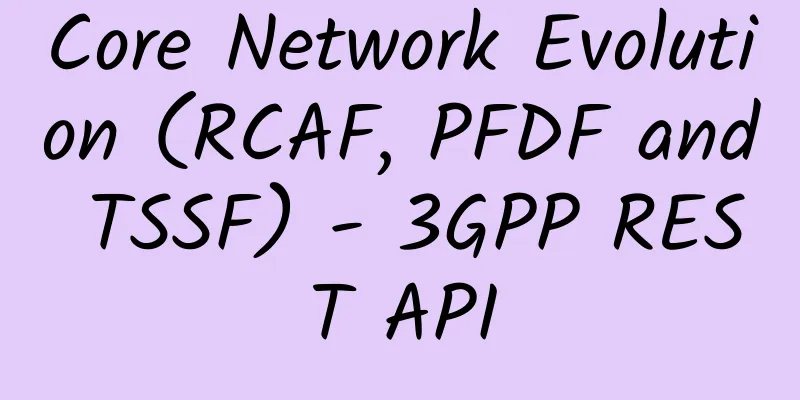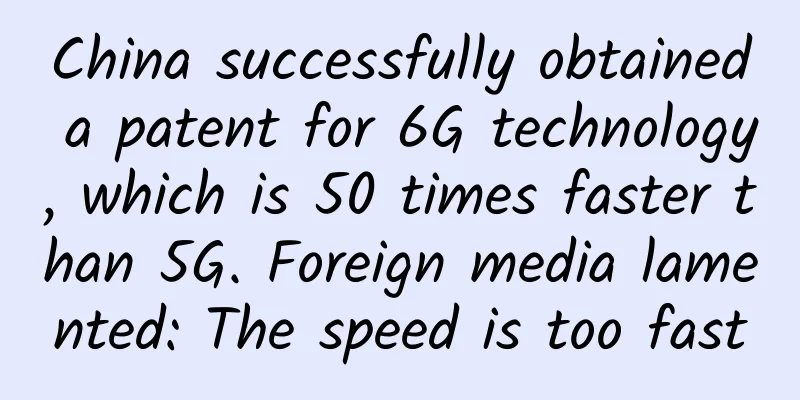Core Network Evolution (RCAF, PFDF and TSSF) - 3GPP REST API

|
Looking back at the diversity of technology development, the standard has taken a new path since 3GPP Release 13. There is more focus on new network elements, extensive attention to machine type communication (MTC), new REST-based interfaces (JSON), and new protocols such as the Packet Forwarding Control Protocol (PFCP). This article will introduce the three newly introduced functions in 3GPP Release 13 and 14: Radio Congestion Awareness Function (RCAF), Packet Flow Description Function (PFDF) and Traffic Steering Support Function (TSSF).
Radio Congestion Awareness Function (RCAF) According to the definition of 3GPP, the RAN Congestion Awareness Function (RCAF) provides RAN User Plane Congestion Information (RUCI) to the PCRF so that the PCRF considers the RAN user plane congestion status as a factor in determining the policy. So how does it do it? Simply put, RCAF is integrated with RAN O&M to collect information about user plane congestion and affected Cell/eNBs, then queries MME/SGSN about the affected users and services (IMSI/APN), and then updates PCRF with the acquired information to help PCRF make decisions (policies) to handle the current congested user services. RCAF Reference Point The NS, Np and Nq/Nq' interfaces are all standard 3GPP interfaces, while the deployment of the interface between RCAF and Radio O&M is operator specific. The following is a summary of the corresponding 3GPP standard reference points. RCAF is meant to play an important role in mobile broadband and MEM (primarily NB-IoT) congestion awareness and reporting. For MBB, RCAF will identify the congested components, affected users and services, and then report to PCRF to apply the relevant congestion policies. This is done by RCAF asking MME for the affected users and services (IMSI+APN) for a given congested component reported or exported from Radio O&M. For M2M/IoT, RCAF will be integrated with SCEF, which enables the network to notify the third-party AS (IoT platform) of congestion status, which may cause potential risks to data transmission. The same process can be queried through SCEF through AS and application server. Packet Flow Description Function (PFDF) The Packet Flow Description Function (PFDF) is a repository of Packet Flow Descriptions (PFDs) that can be managed, added, updated, or removed by the SCS/AS (which can be a third-party AS) through the SCEF. The so-called PFD, in its simplest form, consists of a PFD ID, a triple including the protocol, the server IP address and the port number (it can also be a URL, host name, domain name, etc.). For example, dealing with some company's IoT platform might require adding a new PFD to allow sensors (traffic) to pass to the new server, so the PFD installation might be, <server IP address>, <protocol>, and <port number>. Ultimately, all of these require PCDF to be executed in PCEF to achieve this function. In short, PFDF enables third-party ASs to provide/modify/delete PFDs into the MNO network through SCEF. PFDF can store PFDs or provide them to PCEF through a JSON interface. Below is a call flow that describes a basic use case. PFDP reference point Both Nu and Gw interfaces are standard 3GPP interfaces, and both Nu and Gw are based on REST/JSON interfaces. Traffic Steering Support Function (TSSF) TSSF is the function that receives traffic steering control information from PCRF and ensures that the relevant traffic steering policies are executed in Gi-LAN. Traffic steering policies are configured locally in TSSF and can be used for uplink, downlink or bidirectional links. To ensure that the traffic steering policy is executed, TSSF performs deployment specific operations configured for that traffic steering policy. Through St-specific JSON attributes, such as flow information, ts-policy-identifier-dl, ts-policy-identifier-ul, ts-rule-name, etc., PCRF can activate specific service-oriented policies in TSSF. These policies could define a local action in the TSSF, assuming one of the actions could be NSH insertion, in which case this would be a collaboration between the IETF and 3GPP to implement the Service Function Chaining (SFC) use case, but this has not been confirmed at this time. The St interface is a REST interface based on JSON. The following is the position of TPCF in the PCC reference architecture, but embedding PGW is a candidate function. While these new network capabilities look interesting, market adoption is not guaranteed, especially as vendors in the market offer tailor-made capabilities with specific solutions that do almost the same job, just using different protocols and technologies. |
<<: 2018 Top Ten Internet Trends Prediction: 5G Becomes the Focus
Recommend
How to open a 5G automatic account? Let’s follow Brother K to find out!
The recent projects are not very busy, so Brother...
5G connectivity enables smart substations
[[423089]] Smart substations will be installed be...
The battle for future wireless network communication technology
Wireless communication is closely related to our ...
Authoritative release: Ten major events in China's industrial Internet in 2020
In order to comprehensively display the developme...
Behind the popularity of blockchain concept, the real value lies here
In the era of Internet big data, people come into...
How 10 popular SD-WAN startups survive in the cracks
The SD-WAN market is very hot. Large enterprises ...
Friendhosting Christmas/New Year promotion, 40% off all VPS hosts, unlimited traffic in multiple computer rooms
Friendhosting launched a promotion for Christmas ...
TripodCloud: US CN2 GIA line VPS hosting $38.99/half year, 1Gbps bandwidth, optional large hard disk
Many friends are looking for CN2 GIA line VPS hos...
The threat of cyber espionage
[[192125]] The cyber espionage operation, now nam...
The mobile phone business was hit hard in 2020: Even the 5G boost could not save sales
Even though 5G has been gradually deployed to mai...
Cloud is still the protagonist of Huawei Connect 2017; Huawei invites you to "grow everything" together in the cloud era
[51CTO.com original article] From September 5 to ...
BandwagonHost has launched a new SoftBank line in Osaka, Japan, with an annual fee starting from US$65
bandwagonhost is a subsidiary of the old IT7 comp...
Seven tips to help you successfully perform a domain controller network migration
【51CTO.com Quick Translation】Introduction: Changi...
Zigbee, BLE and Bluetooth Mesh, how to choose the best solution?
In the world of IoT, wireless communication techn...
Five ways to establish effective communication in remote teams
The term "remote" itself has a connotat...









